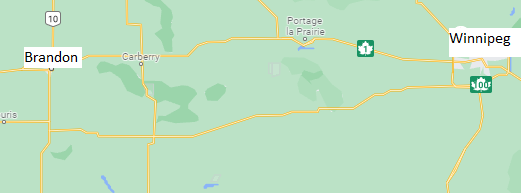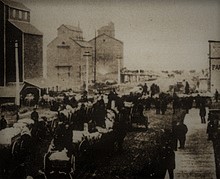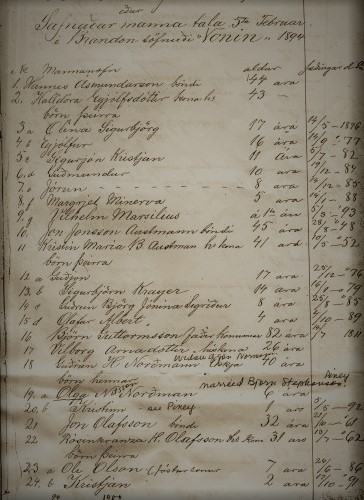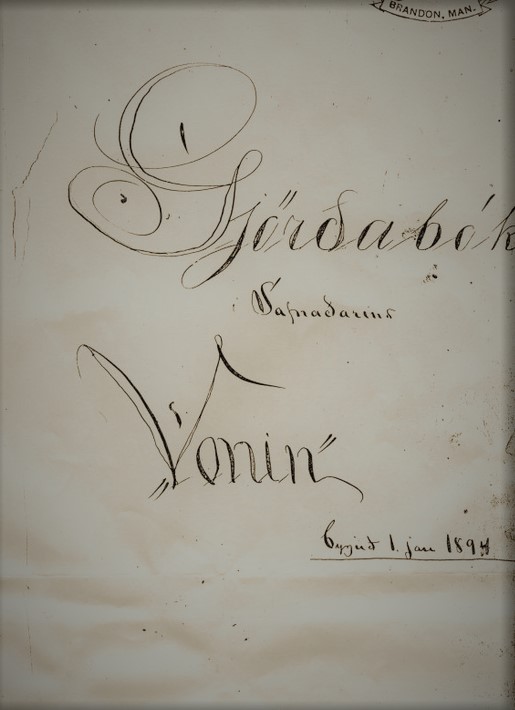
The Icelandic village of Baldur is just over 60 km (37 mi.) south of Carberry and from the village to Brandon the walking trail was just over 90 km (56 mi.).
Brandon is Manitoba’s second largest city, located in the southwest corner of the province, 214 km (133 miles) west of Winnipeg and 120 km (75 miles) east of the Saskatchewan border. For centuries, herds of bison lived in the immediate vicinity of the indigenous camps of various tribes, most of them Sioux. When immigrant settlement began on the plains west of Winnipeg around 1870 and farmers occupied land, the bison had to give way. Fur traders had been hunting there for years, but the herds gradually declined to the west, and by 1880, they had almost disappeared from Manitoba. Indigenous peoples also either agreed to settle on reservations or disappeared south across the border into the United States or further west on the Canadian Plains. The Canadian government organized the settlement in cooperation with the Manitoba government, planning a railway construction all the way west to the Pacific Ocean. In 1882, the town was recognized as a municipality and became a center of commerce, services, education and administration in the southwestern part of the province.
Icelanders in Brandon

Here, farmers have brought their grain to Brandon and are waiting to be unloaded.
Icelanders first came to Manitoba in 1875 and almost all settled in New Iceland by Lake Winnipeg. But there were also some who settled in Winnipeg in the years 1875-1880. The emigration from New Iceland began in 1879 and the first to leave went south to N. Dakota. From the 1880s onwards, however, people sought out the plains west of Winnipeg and gradually an Icelandic settlement was formed which was called the Argyle Settlement. Both agriculture and livestock were practiced there, and in the early years people transported products on foot from the village to Brandon. Many farmers went on these trips together in the autumn or early winter. Oxen pulled wagons, loaded with grain bags, calves and heifers followed. These trips took several days, people usually found clearings in the woods for the night. Icelanders began to settle there in 1882 and in 1887, there were a few families and single people. In 1888, 60 people joined the community, newly arrived from Iceland, and in 1892, 130 Icelanders were registered in the town. This small community did its best to preserve the Icelandic heritage, meetings were held, and Bible readings were held on Sundays in private homes. In 1889 a congregation was formed, a plot of land was bought in the town in 1890, church building began, and in May 1893 the church was consecrated. The congregation was called Vonin (Hope). Priests visited the congregation from Argyle and Winnipeg. As the last decade of the 19th century progressed, settlers moved to new settlements both in Manitoba and later in Saskatchewan. There was a slight decrease in the Icelandic community in the town, but newcomers often stayed, at some point, in Brandon on their way to unoccupied areas. For example, Árni Jónsson from Strandasýsla came with his wife and children to Brandon in 1891 and stayed there for twelve years.


